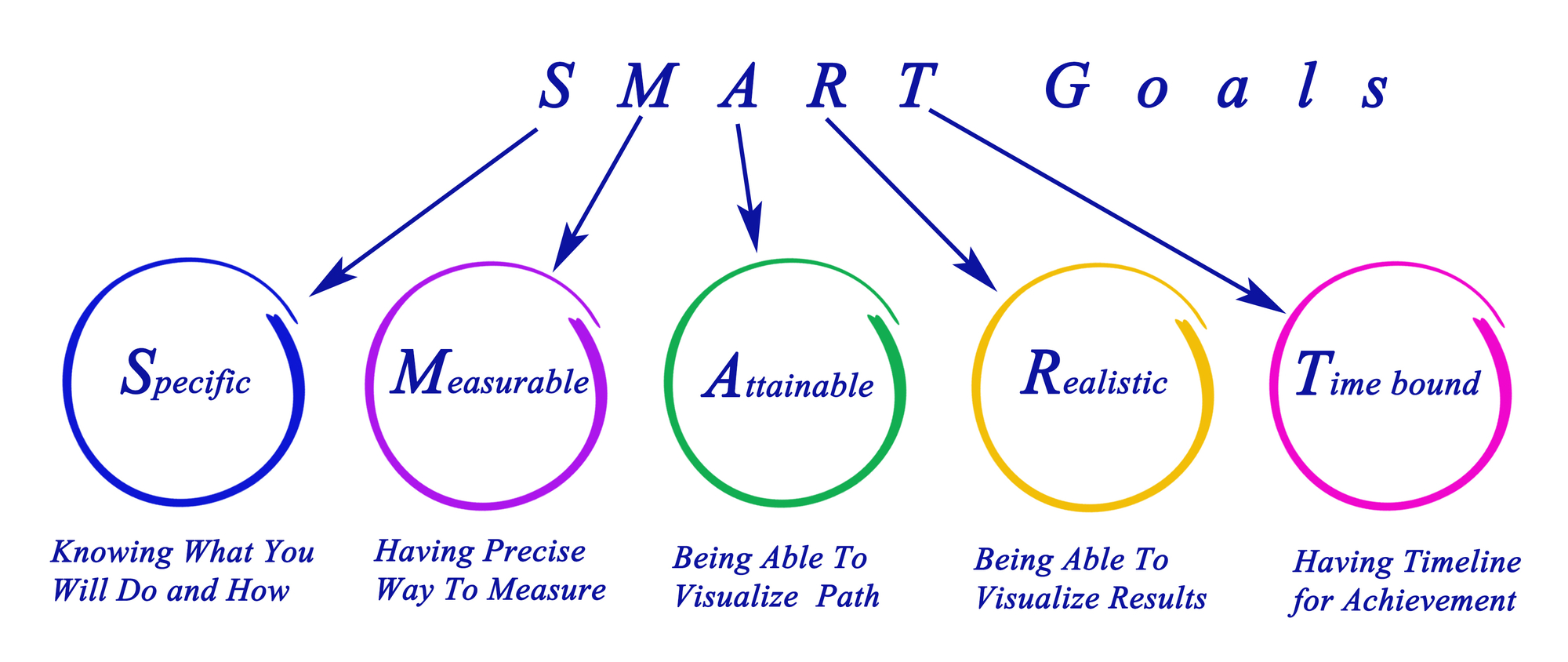SMART Goal Setting for Clarity and Momentum
SMART goal setting creates clarity and momentum. S.M.A.R.T is an acronym used to create measurable, achievable goals. S.M.A.R.T. goals provide you with a straight forward, easy to use framework for the goal setting process. This concept provides focus, clarity, definition and motivation to follow through on achieving your goals.

Specific
Being specific makes it easier to visualize the process and outcome of achieving your goals. Example of a weight loss goal: “I want to lose 30 pounds”.
Not bad, at least there is a target; however, “I want to lose 30 pounds so that I can wear my favorite dress to my best friend’s birthday party in May” is much easier to visualize includes your “Why”. The reason behind your goal enables you push through slumps and road blocks.
Measurable
Be as precise as possible when setting your goals. Establishing a measurement allows you to track your progress and know when your goals are achieved. Establishing specific criteria helps you stay on track. For example, “make more money” is not a measurable goal; it is not clear what “more” means.
Smart goal setting means you have specific numbers in mind! Establish the goal to increase your income by 20% per month within 9 months. Now you can benchmark and track your progress each month until you reach your goal and achieve success.
Attainable
A goal that is unattainable will cause frustration and lack of motivation. You are not going to become a first-class public speaker or create a six-figure earning blog overnight. Creating an impossibly big goal can lead to unnecessary frustration and ultimately defeat.
Realistic
SMART goal setting is realistic. In a perfect world you would have six hours a day to practice public speaking or work on creating your blog. Accept that you live in the real world, not a pretend one, and set goals that fit your reality.
Is it possible to realistically become a first-class public speaker within six months if you work eight hours a day, commute three hours a day during the week, spend weekends catching up on errands, and only have time for practicing public speaking once or twice a month? How does this goal fit with your current schedule and lifestyle?
This doesn’t mean you should give up on this goal; however, you should be setting goals that you can realistically fit into your schedule and lifestyle. Set goals that you can realistically work towards. If your goal takes a certain time commitment, make sure your schedule can accommodate the commitment or adjust the target date.
For example, you could either adjust your schedule to make room for additional public speaking opportunities or move out the target date of six months to twelve or eighteen months (or more). You could also adjust your goal to focusing on public speaking on a smaller scale.
Time-Bound
Clear timelines create focus as well as a sense of urgency. Timelines keep you focused on completing the tasks related to your goals more quickly than if there were no target dates identified.
For example, you want to learn how to play golf so that you can network with potential clients. What would be a realistic time frame for your schedule and lifestyle? Is there a golf tournament in six months that you would like to participate in? Establish a timeline for your goal so that you can track your progress.
Set goals that can be realistically achieved within one year. A longer timeline can be overwhelming and seem unattainable. Focus on what can be achieved in the short term sets you up for success and fosters momentum.
SMART Goal Setting - Long Term
Where do you want your life to be in 10 years? One of the most important ways to live the life you want is to set specific goals and plan how you’ll achieve them.
But how do you decide on a 10-year goal? Break it down into smaller pieces. Instead of taking one giant leap to get to your goal, think of it like climbing up a ladder toward your goal.
Long-term goals with timelines greater than a year can be broken down into smaller goals that can be achieved in a year or less.
Setting clear, concise SMART goals ensures you can easily measure your progress and gives you momentum to reach your destination.







